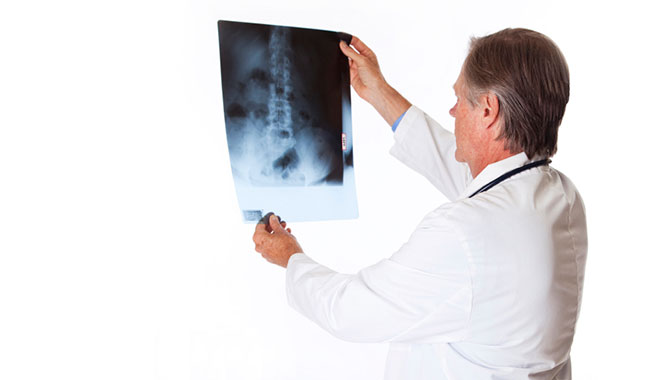
Clínica del Río relies unquestionably on the latest technology to provide the best tools for the medical team in order to help them arrive at genuine and quick diagnoses.
Our Radiology unit has the following equipment:
Digital Radiography
X-rays are a form of high energy electromagnetic radiation which can penetrate through the human body and produce an image on a photographic plate. In this process the radiation will be weakened on the basis of the different densities of the structures it passes through. This is shown on the photographic plate in the form of different shades of grey.
The digital version we have at Clínica del Río improves the detail of the images giving the doctor more certainty when making a diagnosis.
Digital Mammography
A mammogram is an X-ray of the breasts, which is used to detect signs or symptoms of breast cancer. This test detects micro-calcifications (small deposits of calcium in the breast, which are sometimes an indication of breast cancer) or a tumor that is not possible to palpate. This diagnostic test is generally requested by a gynecologist as a preventive measure for women after a certain age, or in cases when small lumps are found during a check-up examination.
When does the National Cancer Institute (NCI) recommend that women have selective detection mammograms?
Women of 40 years old or more should have a mammogram every 1 or 2 years.
Women who are at greater risk than average of developing breast cancer should talk with their medical service provider about the necessity of having a mammogram before they are 40 and how often.
What factors put a woman at higher risk of developing breast cancer?
The risk of breast cancer increases gradually as women get older. However, the risk is not the same for all women. Research has shown that the following factors increase the possibilities of a woman developing this disease:
Personal history of breast cancer: women who have had breast cancer have more probability of developing a second breast cancer.
Family history: the probabilities of a woman developing breast cancer increase if her mother, sister or daughter has a history of breast cancer (especially if this was diagnosed before 50 years of age).
Some changes in the breast in the biopsy: a diagnosis of atypical hyperplasia (a condition which is not cancerous where the cells have abnormal characteristics and are numerous) or of lobular carcinoma in situ (LCIS) (abnormal cells which are found in the lobules of the breast) increase the risk of breast cancer in a woman. Women who have had two or three breast biopsies due to other benign conditions also have a greater probability of developing breast cancer. This increase is due to the situation leading to the biopsy and not to the biopsy itself.
Genetic alterations: specific alterations in certain genes (BRCA1, BRCA2 and others) increase the risk of breast cancer. These alterations are rare; it is estimated that they are less than 10 per cent of all breast cancers.
In the Clínica del Río we have Digital Mammography which provides better clarity in the image and therefore gives the specialist doctor greater information for a more effective diagnosis. All mammograms are carried out by an X-Ray technician and a report is made subsequently by a Radiologist. This report is then given to the gynaecologist to be incorporated in the patient’s record.
Bone Densitometry
Bone densitometry is a test to determine the bone mineral density. It serves to diagnose osteoporosis. The test is carried out with a machine that measures images and gives a figure of the amount of bone mineral by surface area.
Densitometry is recommended in the following cases:
Postmenopausal women who are on hormone replacement treatment
Suspected fracture or crushing of the vertebrae seen in a conventional X-ray
Prolonged treatment with corticoids.
Asymptomati primary hyperparathyroidism.
Monitoring of the development of osteoporosis after establishing treatment.
Ultrasonography
The following types of ultrasound scans are carried out:
Abdominal and vaginal gynaecological scan
High resolution obstetric scan
Artery and vein Doppler
Abdominal scan
Cardiac Doppler-Colour scan
Vascular Doppler-Colour scan
Urological scan
Testicular scan
Thyroid scan
Musculoskeletal scan
Breast scan
